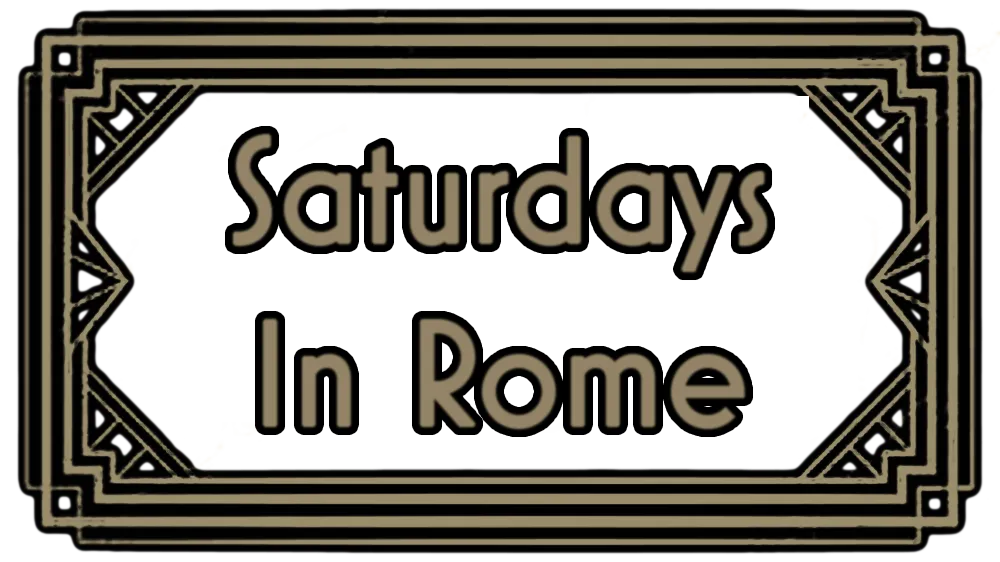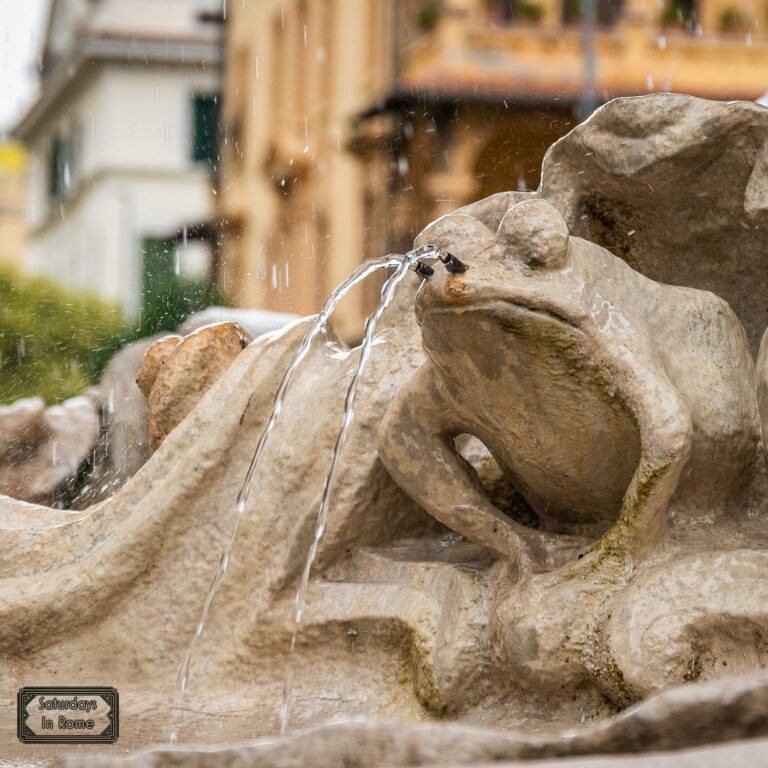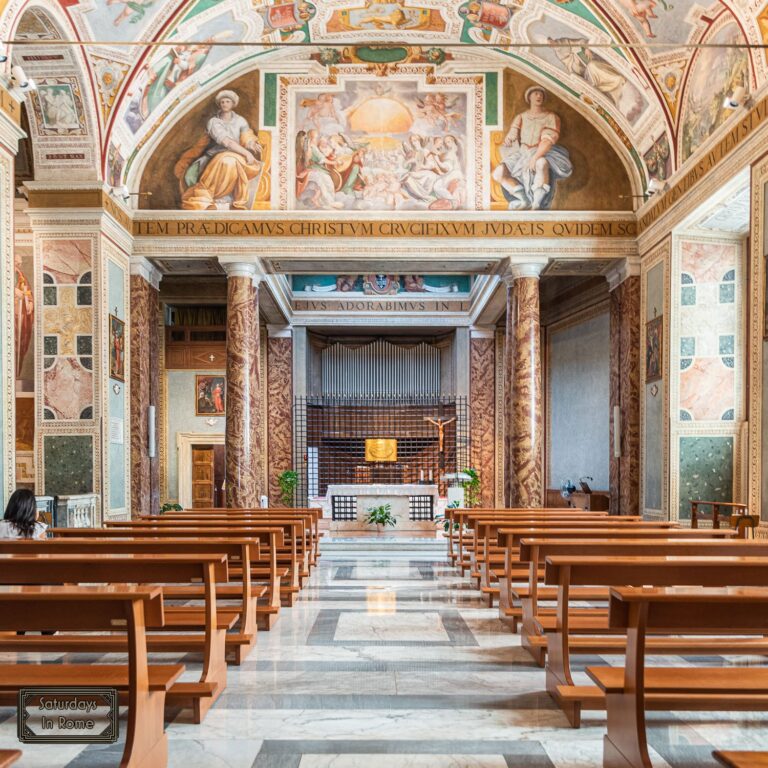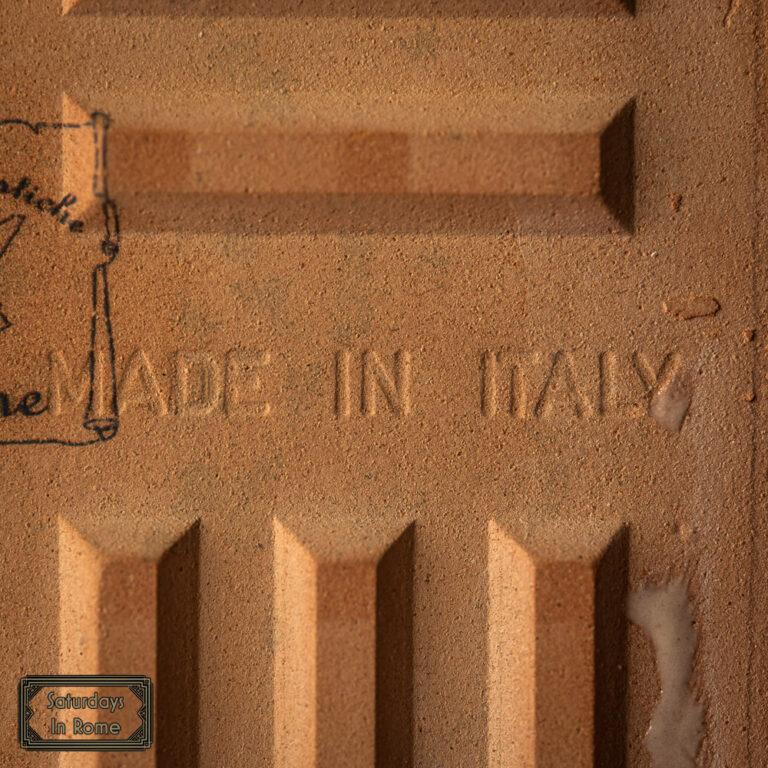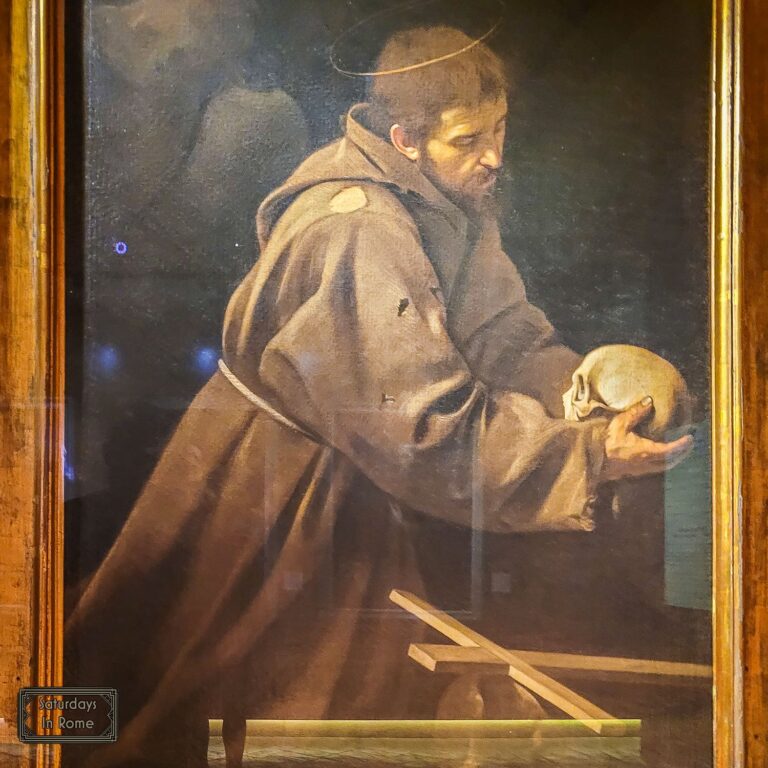Inside The Pantheon: What You Will See When You Visit
Standing inside the Pantheon in Rome is an experience not to be missed and we’ll help with more information on tickets and guided tours.
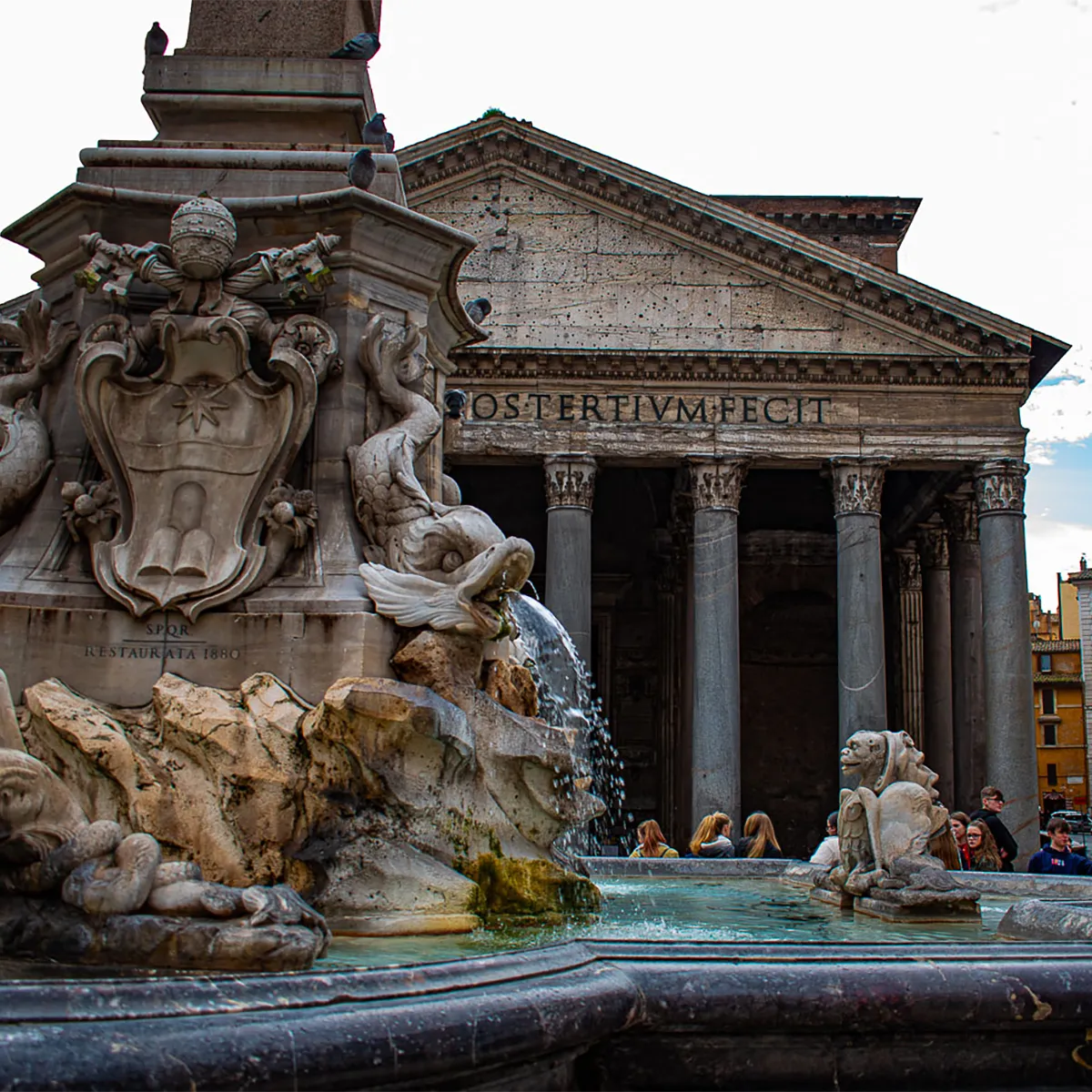
The History Inside The Pantheon
This is the Pantheon’s third version and it is the only ancient building in Rome in continuous use since its construction. The first version was built during the reign of Emperor Augustus and commissioned by the famous Roman general Marcus Agrippa. Agrippa and the Emperor were friends and he eventually became the son-in-law of the Emperor after marrying his daughter.
The name Pantheon is a dedication to All Gods which speaks to the polytheism of the Roman Empire, but also refers to the statues of the 12 major Roman deities that were placed around the building.
When Was The Pantheon Built?
The first version of the Pantheon, which was started in 27 BC and completed in 17 BC, burned to ground. The exact form of the Pantheon is debated because of the destruction of everything except for the façade. It was rebuilt under Emperor Domitian in 80 AD, but it burned down a second time in 110 AD. The third version of this temple was built in 127 AD under the reign of Hadrian. The structure of the building was wood, which is why it was able to burn down repeatedly.
Outside The Pantheon
The Pantheon, with its circular foundation, was made to look like a Greek temple with a portico of 16 enormous Corinthian columns and cross-beams under a pediment. The columns are 40 feet tall, 15 feet around and each is made of a single piece of granite. The walls are a shell of bricks filled with poured concrete.
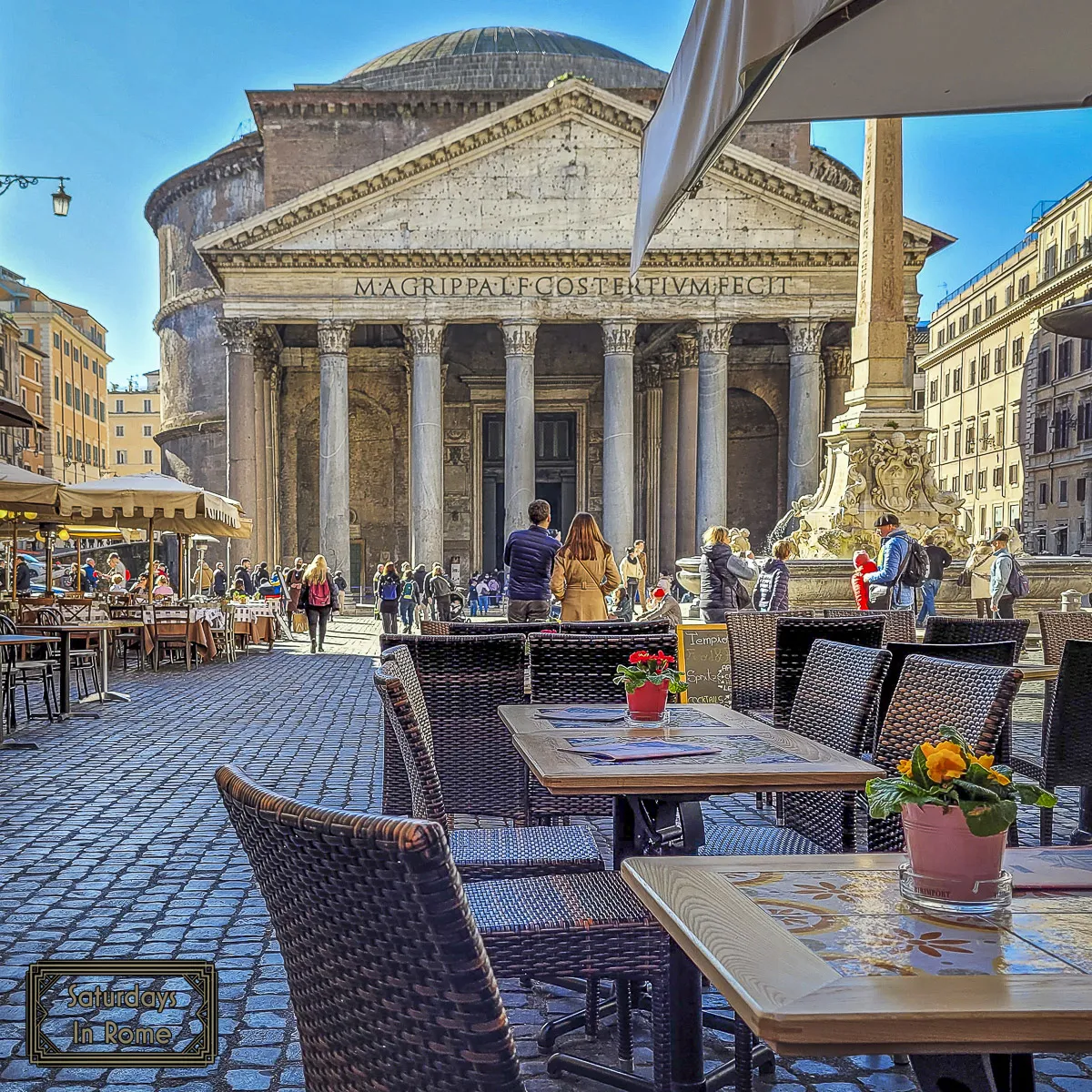
Emperor Hadrian gave credit to the original builder by including the inscription from the original temple, which reads: M.AGRIPPA.L.F.COS.TERTIUM.FECIT, which translates to: Marcus Agrippa Son Of Lucious Third Time Consul Made This.
Sadly, most of the ancient decorations have been lost over the years due to looting. For example, after the temple was consecrated as a Catholic church, which saved it from being abandoned, was described by Paul the Deacon paraphrased as:
Remaining at Rome twelve days, Emperor Constans II pulled down everything that in ancient times had been made of metal for the ornament of the city, to such an extent that he even stripped off the roof of the church, which at one time was called the Pantheon, and had been founded in honor of all the gods and was now by the consent of the former rulers the place of all the martyrs; and he took away from there the bronze tiles and sent them with all the other ornaments to Constantinople.
The Pantheon Fountain (la Fontana del Pantheon) is located outside the Pantheon in the Piazza della Rotonda and was commissioned by Pope Gregory XIII. It is topped with an Egyptian Macuteo obelisk that was created during the period of Ramses II and it was in a temple in ancient Rome dedicated to Egyptian Goddess Isis.
What Is Inside The Pantheon?
The Pantheon dome makes it unique, and possibly the most influential dome in history. It is the model and inspiration for Cathedral (Cattedrale) dome in Florence, for Michelangelo’s dome in the Basilica of St. Peter and for the US Capital.
Why Is There A Big Hole In The Pantheon?
The most striking feature inside the Pantheon Oculus. Symbolizing a pathway to the heavens, this circular hole is at the center of the dome and the only source of natural light in the interior. It is open to the weather, which helps to keep it cool and well ventilated. There is drainage built into the floor with a 12 inch incline for rain to drain out.
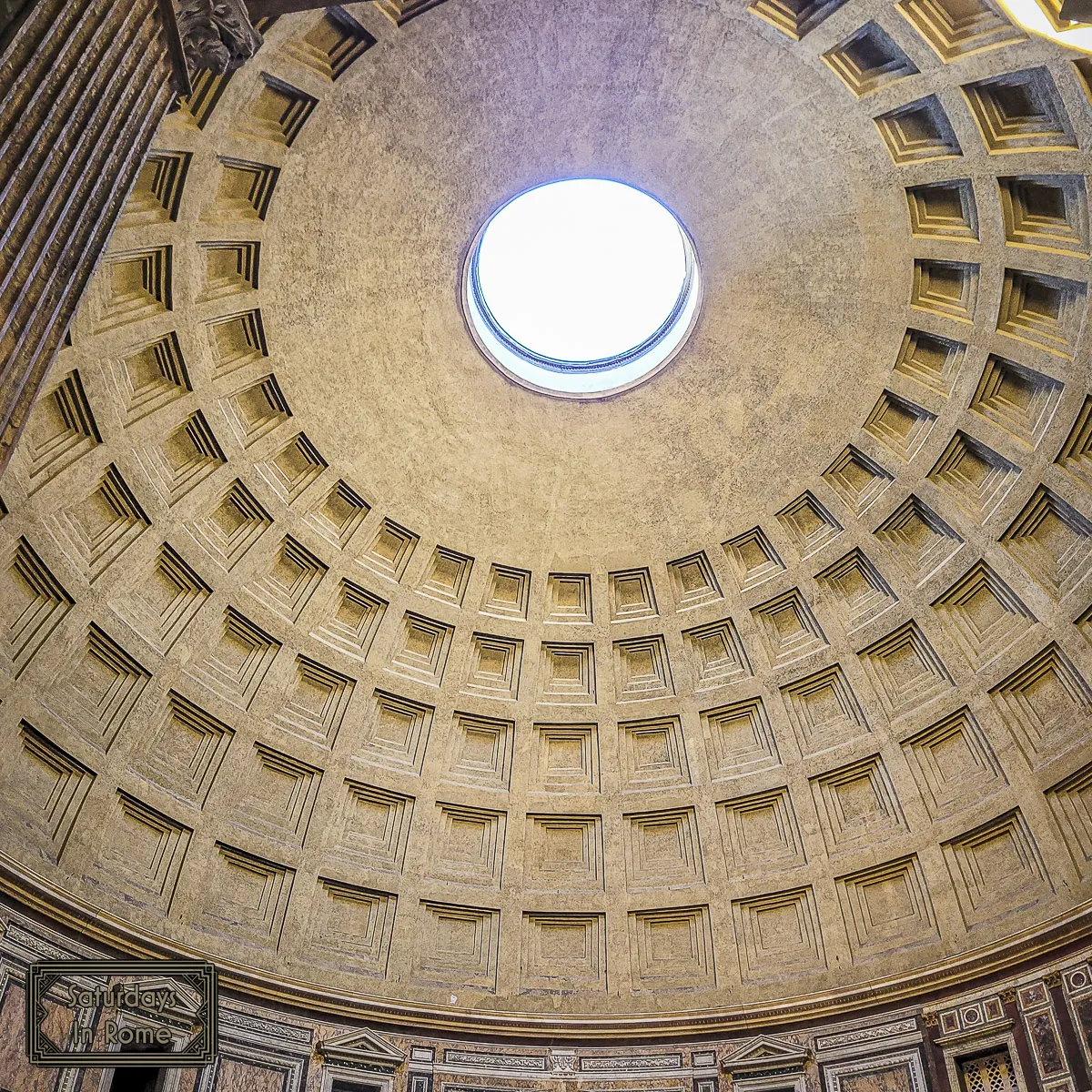
The Pantheon dome is as high off the ground as it is wide, 142 feet, with a perfectly semi-spherical shape. It is made of concrete, invented by Rome, heavier at the bottom and almost 20 feet thick, they get thinner as you ascend to around 5 feet thick.
Who Is Buried Inside The Pantheon In Rome?
There are niches around the temple that contain the tombs of some of the most important figures in Roman and Italian history. Among these are:
- Raphael (1483-1529) – He is one of several artists buried in the Pantheon and being so much more popular than the others, they carved out the marble in front of his tomb and replaced it with glass so you can see his tomb. The inscription on the tomb, written by Pietro Bembo, reads in latin: “Here lies Raphael whom while he lived nature feared to be out done but now that he lay dying she fears that she will die herself”. Raphael died at 37 years old on his birthday and after what is described as a wild night with his mistress, known as The Baker’s Daughter (La Fornarina).
- King Victor Emmanuel II – The first king of Italy is on the opposite side from Raphael. He is known as the Father of Italy, with the inscription: Padre della Patria. His son, Umberto I is also buried there, although not as popular as his father. Another nearby tomb is that of the queen and first cousin of Umberto I, Margarita who is also of pizza fame. Fresh flowers are placed at these tombs by Royalists, Social Conservatives and Fascists to celebrate the monarchy. I previously posted about the Italian Monarchy, so please check that out.
Is the Pantheon Free To Enter?
Unfortunately, the Pantheon is no longer free to enter. For more than 2,00 years, there was no cost to enjoy this beautiful temple to the gods, but now there is. Entry now will cost you €5 per person, with some exceptions. Entry is still free if you are under 18 years old and if you are a Rome resident (Yeah!).
The entry fee is also waived/combined/buried if you also buy on of their audio guides or guided tours that range from €15 to €25.50. If you are interested, you can book your tour on their site. If you don’t want to give the Pantheon any more money than is required, we’ve included some links to tours in this article or you can check out our affiliate partner GetYourGuide for some other tour ides.
Visiting Hours For The Pantheon
Opening hours for the Pantheon are as follows:
- The Basilica is open everyday from 9:00 AM until 7:00 PM
- Is it closed on:
- January 1st (New Years Day)
- August 15th (Ferragosto)
- December 25th (Christmas)
- Last Admission Is 30 minutes before the closing time
Times may vary due to special religious celebrations so please check their official website or their Facebook page for more details. Generally, since the Pantheon has been in continuous use since 609 AD masses are held regularly at 5.00 pm on Saturdays and on pre-holidays, and at 10.30 am on Sunday and public holidays.
If you are looking to visit the Pantheon on weekends and public holidays it will be necessary to book the visit at least one day in advance. For those who book a tour with an audio guide or a tour with an audio guide and printed guide or a guided tour on this website, you will need to show the voucher at the entrance at your chosen visiting time.
Other Things To Do Around The Pantheon
If you decide to check out the beauty inside the Pantheon, there are some other great things to do in the area. Check out these:
- Exploring The Great Churches of Rome On Altar At A Time.
- These Are The Best Churches In Rome You Must See!
- Santa Maria Sopra Minerva Is A Popular Church Not To Miss.
- The Church Of Santa Maria Della Scala In Trastevere Awaits.
- 9 Amazing Religious Sites In Rome For Everyone To See.
- The Oldest Church In Rome Is Hidden Among The Better Known.
- San Saba, Rome Is A Jesuit Basilica You Need To Explore.
- The Church of Santa Maria della Vittoria In Rome, Italy.
- The Nativity Scene At The Vatican Is An Inspiring Site.
- Scala Sancta Is A Unique Experience For The Faithful.
- The Santo Stefano Rotondo Church In Rome Must Be Seen.
- San Clemente In Rome Is A Basilica With Layers Of History.
- The Beauty Of A Small Church In Rome Must Be Experienced.
